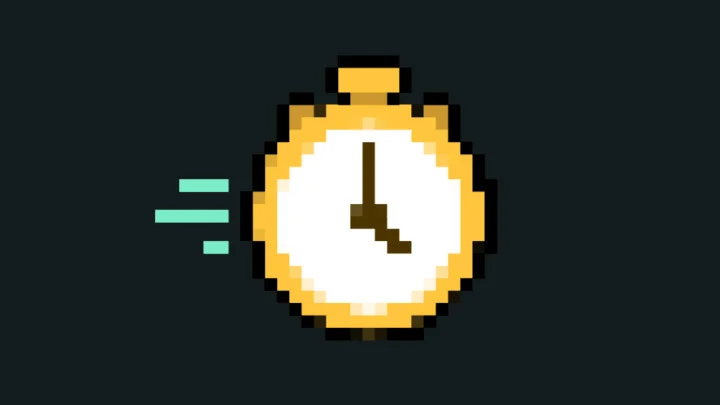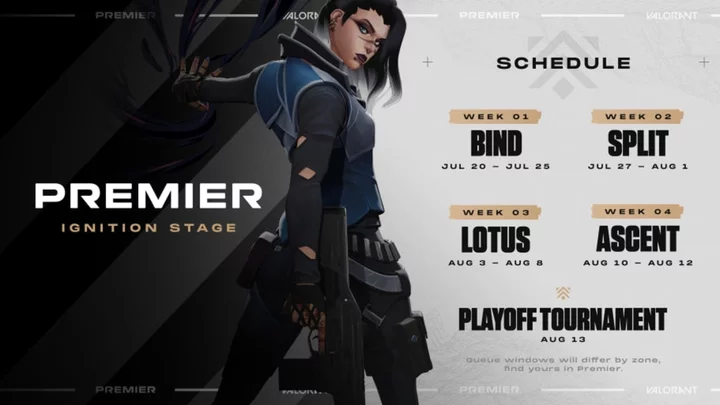From Twitch to documentaries, speedrunning is taking over the way players and developers think about games.
Developers spend months or years creating their game. After publishing and releasing it, players devote their time to absorbing a game from start to finish. Completing it may take days or months, depending on how often they play, after which some players may never touch the game again. Speedrunners, though, go through it time and time again, trying to beat it as fast as they can.
Speedrunning, at its core, is the act of finishing a video game - or a section of it - in the quickest way that you can. While some may think speedrunning has rigid requirements, itâs versatile in its categories.
Rules and Ranking
There are a variety of rules to speedrunning, many depending on the specific game. Some of the most popular rules and rankings are as follows:
- Any% - This form allows players to complete the game with any percentage of completion. In other words, players are able to complete the game as fast as they can without additional limits or restrictions.
- 100% - Players have to fully complete the game by reaching all accomplishments. Since this relies on the game and specific requirements for that run, it can require players to defeat all of the bosses or collect items. It might also find other forms of measurement necessary, such as accessing checkpoints.
- Low% - In this ranking, it is vital for the player to complete the game while finishing the smallest percentage of it. Known as one of the hardest speedrunning ranks, the minimum amount of quests have to be finished in order to obtain this achievement.
- Glitchless - This limits players from utilizing glitches, meaning that they have to complete the game without taking advantage of âbreaking the game.â
These specific rules are in place to categorize different speedruns. While they are altered slightly depending on the game in question, these are the usual types of runs that viewers may come across.
Common Speedrunning Games
Among the methods that these players use include âbreaking the game.â This technique exploits glitches and code to skip multiple sections of the game, and are often used in a number of different rankings. While this method of speedrunning is commonplace in older games like Super Mario 64 and Super Mario Bros, this exploitation is also seen in newer games, such as Elden Ring.
Elden Ring, 2022âs breakthrough game from Dark Souls developers FromSoftware, has been on the radar for speedrunners and enthusiasts alike. Speedrunner and YouTube user seeker TV achieved the monumental task of running through the game in under six minutes during an Any% run, a significant difference to its 50 to 70 hour campaign.
In the comments of the video, seeker TV wrote, âSpeedrunners are using a metronome to hit that timing. I'm using a 107.5 BPM and try to time my forward input + 4 frames input duration at the 5th beat. We also are using another variation of zips to âkillâ bosses, called âMegazips.â It's a zip followed by another W input after 12-14 frames after releasing the initial W press. It's really hard to do it consistently but in this run I got all of them really quickly.â
These tactics that speedrunners use are key for any percentage runs. Using a metronome along with these runs allows for runners like seeker TV to accurately time every move down to the correct frame.
More obscure games have also made their way into the speedrunning community. Reddit user Jon_Calvin started a thread on the more unlikely speedrun candidates. User Elendel replied, âKeep Talking and Nobody Explodes is one of the weirdest speedgame[s] I know. It's not for everybody as it require[s players] to memorize a whole lot of useless and meaningless things. I like to compare it with speedcubing. Except it's more like: you have to solve several different Rubik puzzles at the same time, while cooking, taking care of a toddler and having a conversation with your boss.â
The top Any% speedrun for Keep Talking and Nobody Explodes hasnât been defeated since 2019. Other subheaders for this speedrun include All Bombs (Detonation Allowed), Extreme Bombs (Detonation Allowed), and Misc., all of which are custom to this particular game. Due to its intense and complex material, co-op mode usually takes six hours to complete, while runner Em1 completed the Any% category in a whopping 32 minutes.
Speedrunning isnât just housed on YouTube or Reddit. GDQ, Games Done Quick, is a popular platform that facilitates speedrunning marathons for charitable purposes. Their upcoming event, SGDQ2022, includes games like Elden Ring, but also has other popular classics like Super Mario World and The Legend of Zelda: Ocarina of Time.
Speedrunning documentaries are also common throughout media. Summoning Salt, a prominent YouTube creator with over a million subscribers, shows the history of speedruns for games ranging from Wii Sports to Half-Life 2. Along with this, Summoning Salt even focuses on specific players that are seen consistently at the top of speedrunning lists for multiple games.
Developerâs Thoughts
Nina Freeman, developer and designer of Cibele and Tacoma, stated that she enjoys watching speedruns. âAs a part of the games community, I think GDQ is awesome. I actually got into Twitch because I was watching speedrunners,â she stated. âSome of them are even developers, Iâm sure. Thereâs a mix in the speedrunning community of players and developers, because it is a meeting point of many parts of the industry.â
Even though Freeman doesnât necessarily create speedrun-based games, she commented on her outlook as a developer. âIf I were making games that were being totally broken by a speedrunner, Iâd also be super into that. One of the beauties of game development is that no game is going to be perfect or without bugs. 100% of the time, any game that comes out, you release it and youâre like âwell, weâll see what happens! I wonder how people are going to break this!ââ
Freeman named Twitch streamer Kungfufruitcup as a speedrunner she recommends to others as a starting place, alongside GDQ. Even though developers try to avoid bugs, she is amazed by how people find and utilize them.
âEvery developer tries to avoid that through play testing or having a QA team (if it is a studio.) We do our best to iron those issues out, but no one will ever catch all of them,â she continues. âWith a company as huge as Nintendo - people break their games everyday. Itâs humbling in a way, to see that people are excited enough about your work to try and break it.â
Freeman said, âSometimes it takes a lot of effort on their part to figure out how the system works. It honors the game to play it that hard - to get into it and break it down by trying to see how it works. As a developer, you sometimes spend years trying to make [the game] work, and someone might find something that you yourself never noticed about your game. That, for any developer I think, would be a powerful experience. Speedrunners are so cool. They know how to find this stuff - sometimes better than us.â
Andrew Shouldice, designer and developer of TUNIC, had a small speedrun team at his side while developing his seven-year long project. He discussed working alongside Kevin Regamey, an audio designer from Power Up Audio, and how his experience with speedrunning affected the project. He states, âKevin has also contributed to the speedrunning community by running sound for a lot of the GDQ events. Some other members of the team are involved in the speedrunning community by doing their own runs and making mods for other games.â
âTheir insight is super useful, both after launch and beforehand,â Shouldice recounts. âI got a better sense of what is a good thing to leave in the game. Thereâs a fine line between an exploitable bug that we should leave in the game because it could allow for cool speedrun tech, versus, enough people who are not speedrunners will have it be a problem that we have to remove. Or - we could take a bug and codify it somehow so we can control it more easily and hide it appropriately. If speedrunners can find it, they will find it, so that it can be cool tech without interfering with normal play.â
He also spoke about how Regameyâs speedruns, as well as others on the QA team, inspired his development. He mentioned, âI implemented a feature that allowed the ending cutscenes to be skipped if you were in speedrun mode, and Kevin said, âdonât worry about it. If a run has made it all the way to the end, itâs a good run. Nobodyâs going to be hammering through the credits.â Thereâs a million little nuances of the community and the exercise of speedrunning that I just donât have a whole lot of context for, which is a reason why itâs good to work with other people.â
TUNIC is now part of the SGDQ2022 event. Speedrunner Sunnymuffin is performing an Any% run in an attempt to beat the game in 35 minutes. For context, TUNIC takes anywhere from 12 to 20 hours to complete, depending on how thorough your playthrough is.
Shouldice points out, âFrom a game development perspective, itâs fascinating to see how games can be broken, because it reveals how theyâre made, to a certain extent. You can get an understanding of how something was implemented if you see it from out of bounds. For example, taking a look at how inputs are calculated is an educational tool in an interesting way where real shipping titles can be looked at from an angle where they werenât meant to be seen.â
âOn top of that, a speedrunner is someone who is going to play your game hundreds and hundreds of times - plus. Thatâs more times than most people would play it. They represent a relatively small but valuable cross-section of the community. These are the people who really love the game that you made, so I think that should be supported and cherished. The idea that people are speedrunning this game is wonderful!â
How Will Speedrunning Impact Future Games?
The game industry is a wide and vast space. Speedrunning benefits this artform due to the attention to detail from the player. Having speedrunners on development teams, like Shouldiceâs experience, help developers notice and include other details that they may not have realized or thought of beforehand.
Imagine you are back in grade school writing a paper for class. You ask your friend to read it for you, and they notice some typos that you missed. Without your friend, you wouldnât have realized these mistakes. Game testers do this for developers and designers - but speedrunners make a lot of things more apparent.
Speedrunning is not just a fun hobby. Through a runnerâs uncanny ability to find glitches and holes in even the most polished games, they provide developers with a unique perspective. But when speedrunners play an active role in development, the benefits are felt by the community and regular gamers alike.









